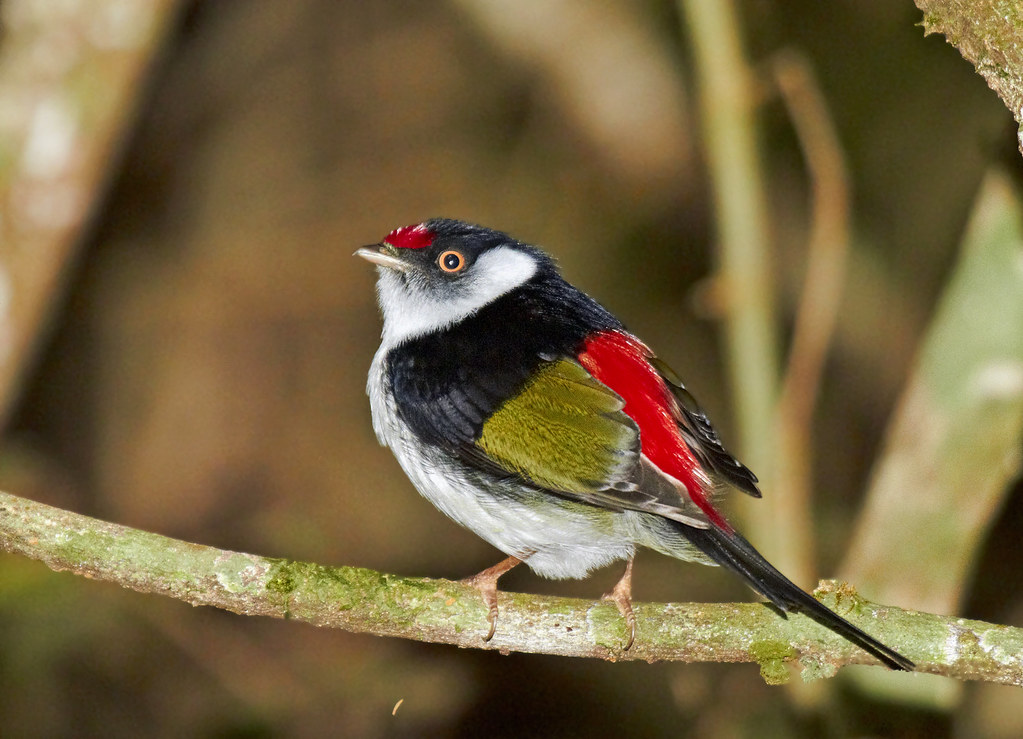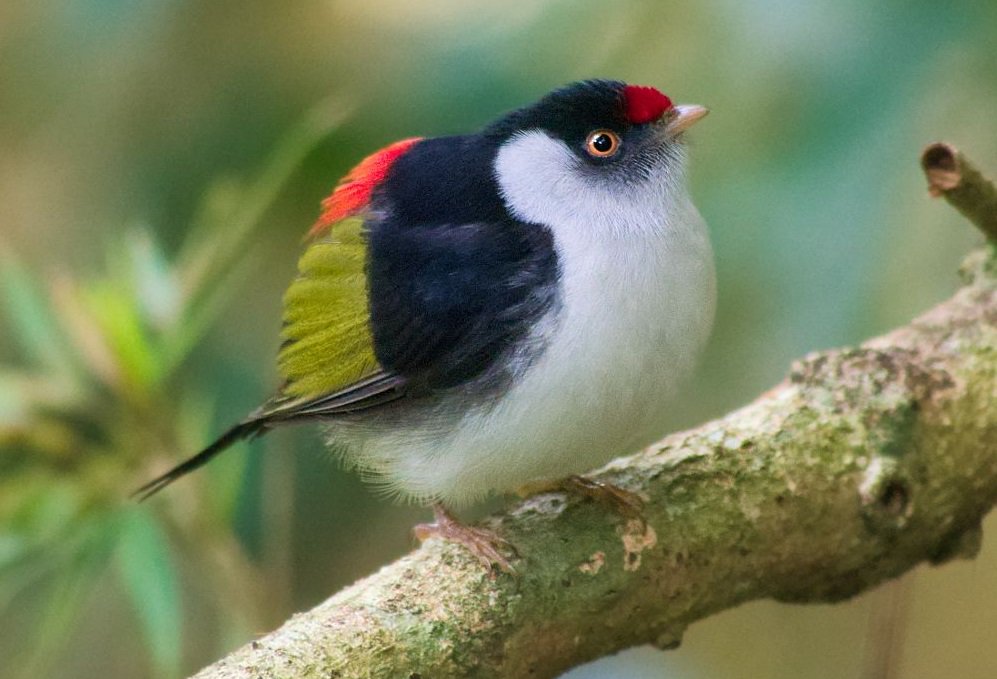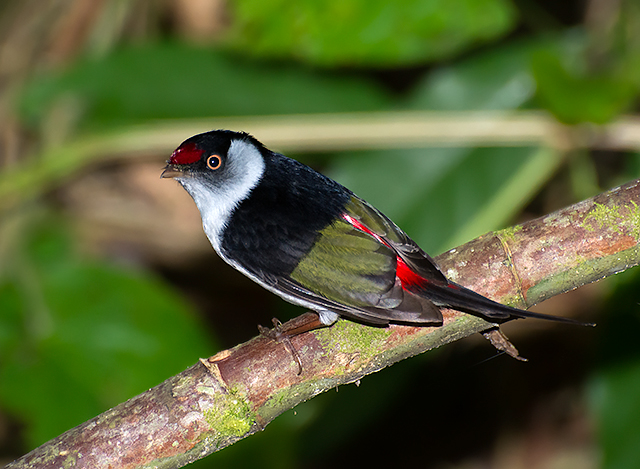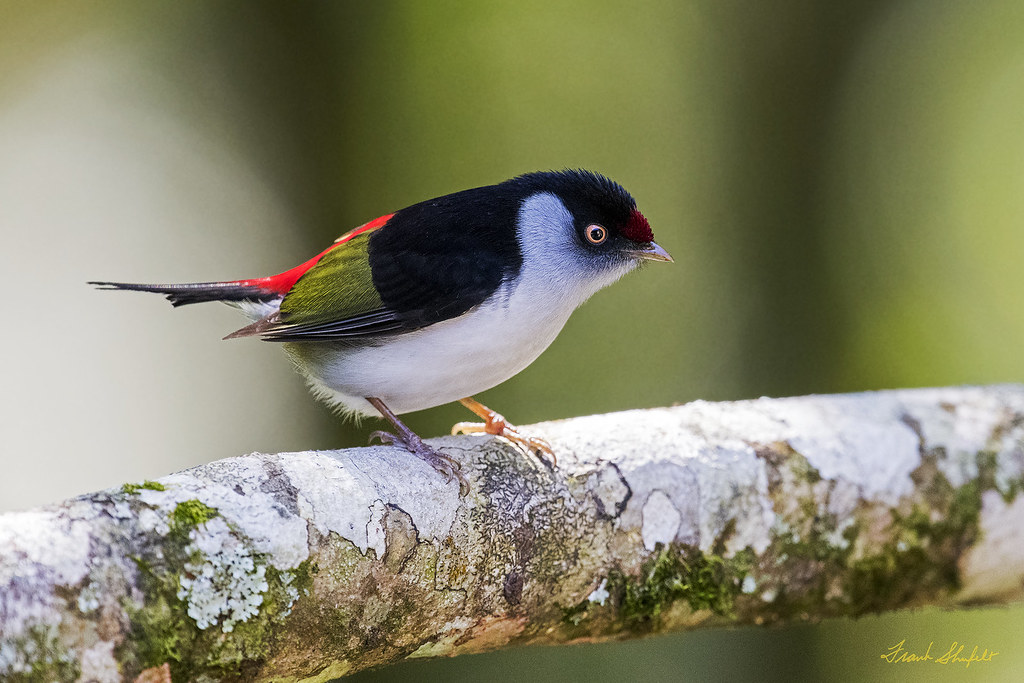Despite being so small, he is very striking with his bright red forehead and equally bright speed stripe running down his back.
Meet the pintail manakin

The pintail manakin (Ilicura militaris) is only 12.5 cm (4.9 in) long. Adult males are very distinctive with their exceptionally pigmented red forehead and rump. They have black wings with green secondary feathers and underneath is a white chest that runs from the rump to the throat directly below the beak. They have a forked tail, dark brown legs, and yellow-orange eyes.

Females are mostly olive green, except for the gray neck and ears, and cream-colored chest.
Juvenile males closely resemble their female counterparts.

“File: Pintail manakin (Ilicura militaris).jpg” from https://www.flickr.com/photos/dariosanches is licensed under CC BY-SA 2.0.
This species can be found and is endemic to the east coast of Brazil.
The pintail manakin lives in the humid Atlantic Forest that extends from the state of Bahia to the state of Rio Grande Do Sul.
The pintail manakin is believed to be a primarily frugivorous bird, but has been recorded consuming small amounts of insects from time to time. 
During the breeding season, the male establishes a 20 to 30 meter display area, called a lek, where he puts on a show for any potential mate. Inside the lek there is a mating perch that is located between 3.3 and 20 meters from the ground. The female is attracted to the leg by its frequent “see” calls. Once a female is in the area, the male will bring her closer to his mating position and jump back and forth on her, sometimes making a clicking sound in the air and fluffing his vibrant red rear with his chin down when he lands. in front of her. 
This species has a very wide distribution and therefore does not approach the Vulnerable thresholds based on the distribution size criterion, so the species is assessed as Least Concern on the IUCN Red List, although it is threatened. due to deforestation.

“File:Ilicura militaris-female.jpg” from https://www.flickr.com/photos/dariosanches/ is licensed under CC BY-SA 2.0.
You can see this bird right here in the video below:





